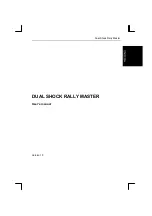
Design and function
Welding parameters
14
099-002025-EW501
29.11.2017
5.3
Welding parameters
5.3.1
Main welding parameters
• Welding current
• Plasma quantity
• Shielding gas
5.3.2
Plasma gas
The plasma gas used is generally Argon.
5.3.3
Shielding gas supply (shielding gas cylinder for welding machine)
WARNING
Risk of injury due to improper handling of shielding gas cylinders!
Improper handling and insufficient securing of shielding gas cylinders can cause
serious injuries!
• Observe the instructions from the gas manufacturer and any relevant regulations
concerning the use of compressed air!
• Do not attach any element to the shielding gas cylinder valve!
• Prevent the shielding gas cylinder from heating up.
An unhindered shielding gas supply from the shielding gas cylinder to the welding torch is a
fundamental requirement for optimum welding results. In addition, a blocked shielding gas
supply may result in the welding torch being destroyed.
• Always re-fit the yellow protective cap when not using the shielding gas connection.
• All shielding gas connections must be gas tight.
For most welding tasks
Mixed argon/hydrogen gas: Ar + 4-6.5%H2
For titan and aluminium materials
Pure argon
Aluminium
Helium and mixed argon/helium gases
5.3.4
Operating instructions
The plasma nozzle has to be selected based on the welding current used.
To form a stable plasma jet, different plasma nozzle diameters are recommended for the individual
currents:
Wire diameter
Current
Plasma gas
Shielding gas
0.6 mm
up to 6 A
0.3 l/min.
3.0 l/min.
0.8 mm
up to 12 A
0.3 l/min.
3.0 l/min.
1.0 mm
up to 18 A
0.4 l/min.
4.0 l/min.
–1.2 mm
up to 26 A
0.4 l/min.
4.0 l/min.
1.4 mm
up to 32 A
0.5 l/min.
5.0 l/min.
1.6 mm
up to 40 A
0.5 l/min.
5.0 l/min.
1.8 mm
up to 50 A
0.6 l/min.
6.0 l/min.
These data are reference values for welding operation at 60 duty cycle. Depending on the plasma
gas quantity, overlapping is allowed.











































